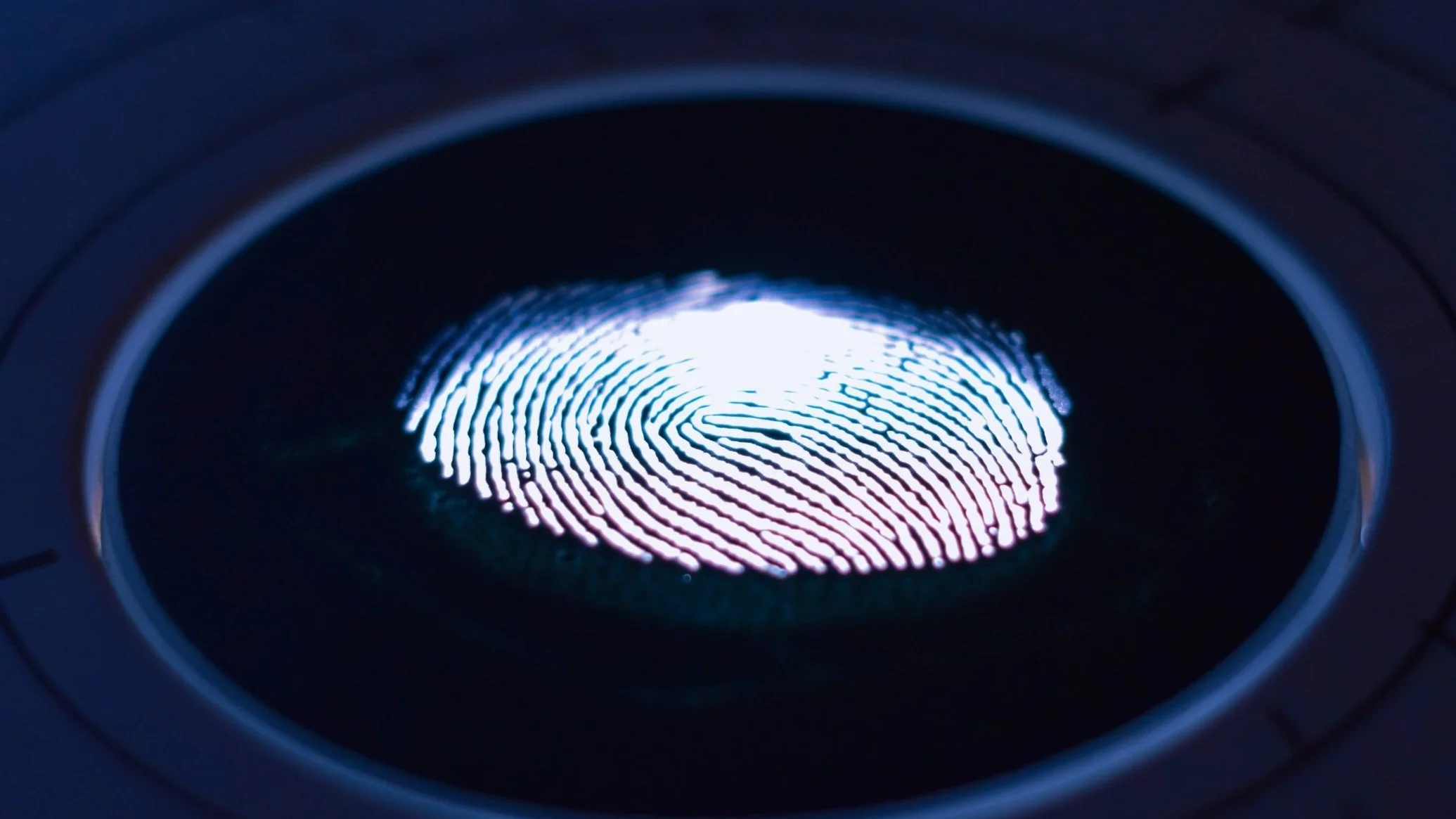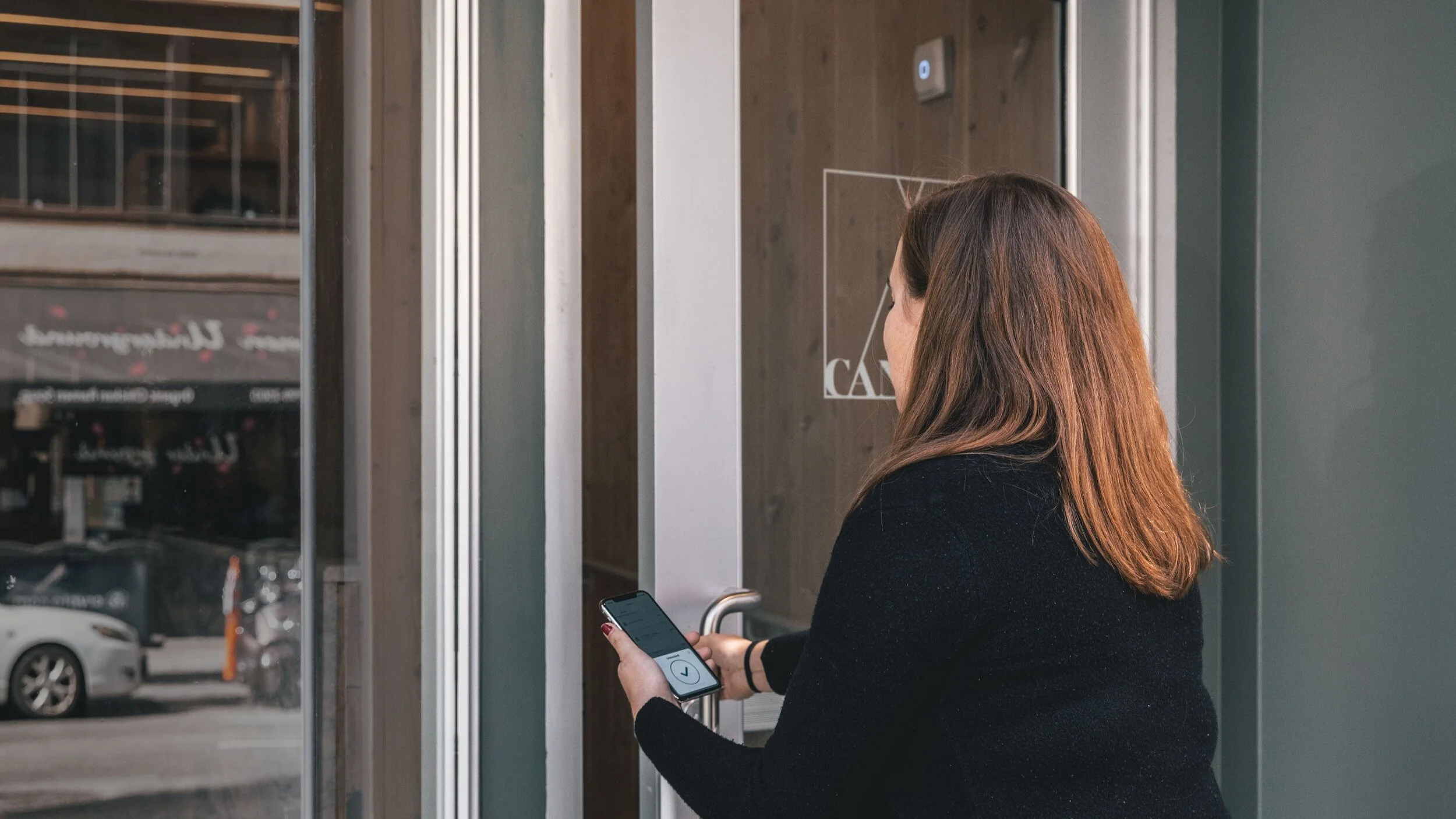Guide to keyless entry systems for businesses
We’ve come a long way from the traditional lock and key, though many businesses still use this method today. More and more businesses are trading in unsecure and frustrating keys for keyless entry systems. There are quite a few options so it is important to really understand both the benefits and costs associated with each credential that replaces keys.
The purpose of this article is to dive into how each keyless entry system works, and the advantages and disadvantages of each access control system you may choose for your own business.
Example of a mobile keyless door entry system
How keyless entry systems work
As you may have guessed by the name, keyless entry systems allow users to enter a building without requiring a physical key. In terms of key management, they also eliminate the need to rekey and work with a locksmith every time you need to share or revoke access.
Instead of a lock and key, keyless entry systems use an electronic or battery powered device to control and unlock the door or lock. Users use an access credential instead of the metal key to communicate with the access control system. When the access control system authenticates authorized users to enter with the valid credential, the door will be unlocked.
Every door entry system provides a very different experience for both the user and the administrator. Some still do have a physical credential of some kind and aren’t truly “keyless” and need to be managed locally. Some are less secure, while others may have more security than most businesses need. Cost is also a huge variant across these keyless building entry systems.
Types of keyless door entry systems
The first way to distinguish which commercial keyless entry system works for your business is to really understand each access credential. Again, the experience will be very different for users, but more importantly managing these systems will have different levels of effort, cost, and level of security.
Key pad
For a doorway with a keypad installed, the user will typically enter a 4-digit pin code to enter the building. The keyless entry system will authenticate and authorize the user by the code they enter.
The main benefit of keypad systems is that they are generally easy and cheap to implement, and they take away the need to give employees or guests metal keys, eliminating rekeying locks.
Unfortunately, there is no way for the system to really know which user entered the building when everyone uses the same pin, and key codes are easily shared making this the most unsecure. Codes are often not changed. Remote unlock is also not available. Restrictions on the type of door limits what this keyless entry system can be installed on, typically electronic door locks which are usually the front entryway.
Most businesses have steered away from keypads unless they are only a few trusted employees because of the security vulnerabilities and no remote capabilities.
PROS
Ease of deployment
Ease of use for user
Affordable
CONS
Not secure
No audit trail
Can’t be managed remotely
Key cards
Business handing out key card for access to building
RFID or proximity key cards are the most used traditional keyless door entry system, and often double as employee badges.
A keyless door entry system featuring key cards usually has a reader, controller, and access control panel installed connected to an electronic door lock. A user waves the RFID card to the reader outside the door for the system to authenticate the user, either authorizing or denying them.
“Keyless” is a little bit of a stretch because administrators still need to give out and manage a physical credential, and these users still may need metal keys for offices, closets, or cabinets as these systems can be expensive or impossible to deploy without electronic door hardware.
A huge advantage over traditional keys is being able to give one key card out for multiple doorways, and that doors can be controlled and unlocked remotely. Frustrations include the constant effort and cost of creating key cards locally, the security vulnerabilities as they can be easily copied by strangers, and the difficulty of staff or guests returning them when they leave.
PROS
Ease of use for user (Badge)
Limits keys and eliminates rekeying
Audit trail
Can revoke access remotely
CONS
Key cards managed locally
Expensive
Easily copied
Hard to integrate with other workflows
Key fob
Key fob access control systems are very similar to key card entry systems but aren’t branded with user identification like with badges. They are often used to unlock spaces where the user can be a little farther away from the reader, like with cars, gateways or garages, though they can be used with most types of commercial electrified door hardware.
Key fobs are usually made to fit on a keychain, a great example is your key fob to unlock and lock your car door. RFID key fobs can be similar to key cards where you tap them next to a reader or tap the button on the fob as you approach the lock, like with many automotive fobs, to initiate the system to authenticate and authorize access.
A great advantage of key fobs for users is they are small and can be hooked on your keychain. Disadvantages are that they need to be managed individually like with key cards, and can be easily copied or borrowed. It is harder for the system to really know if the actual authorized user gained access. If that person has the fob, they have access. Remote access and management is also usually not available, because you need the fob present. They can become very costly to replace as well when not returned or lost.
PROS
Fits on keychain
Limits keys and eliminates rekeying
Good fit for automotive and garages
CONS
Key fobs managed locally
Harder to track
Expensive
No remote capabilities
Biometrics
Fingerprint, iris, or facial scanners can be used as keyless door entry systems for spaces needing additional advanced security like data centers, federal buildings, or any high security area. Biometrics is usually used as a secondary method of access in addition to a key card or pin code for 2 factor authentication. This adds a higher standard of security to other keyless entry systems.
Biometrics access control system with fingerprint scanner
The biggest benefit is giving businesses higher security standards. When a user gains access to the space, biometrics can give administrators more certainty that it was the authorized user.
However, biometrics systems are rare because they are very expensive, and hard to manage and set up for each user. Users also need to be present to gain access, which is usually wanted for the specific use cases needing biometric access control.
Now with biometrics introduced in most smartphones, many mobile access control systems can benefit from this extra layer of security without needing to invest in facial recognition or iris/fingerprint scanners.
PROS
High security
Audit trail
Individual access requirements
CONS
Extremely expensive
Difficult to manage
Need dedicated IT role to manage
No remote capabilities
Mobile access control
Woman unlocking door and gaining access building with smartphone
With mobile based keyless entry systems, your phone is your key! These mobile access control systems authenticate the user’s encrypted key in the cloud and either authorizes or denies access in real-time.
Ease of use for administrators and affordability make these systems very desirable to small to mediums sized businesses. It is as simple as sending a key by entering the user’s name, phone number, and email in a mobile app or web portal.
Mobile access control is completely keyless. Most people these days, 97% of everyone in the U.S., has a smartphone so it becomes very affordable for a lot of businesses who couldn’t afford keyless access control before.
Security is more advanced than every other keyless entry system mentioned. You're less likely to use or let someone else borrow your phone to access a building, and most smartphones benefit from the added layer of security with facial ID or fingerprint scanner.
The unique advantage, especially after the COVID-19 pandemic, is being able to manage and access any lock in the building remotely. Unlike physical credentials like fobs and key cards, even biometrics, you don’t have to be local to share access. Everything is in the cloud.
PROS
Unlock doors and manage remotely
Instant access management
Ease of use
Affordable
Audit trail + smart building analytics
Easily integrated in workflows
CONS
Some businesses may not allow smartphones in the building
Some mobile access control systems do charge per user
Harder for security to see personal identification
The push to mobile keyless door entry systems
In the past year, the need to control access remotely for employees, various service providers, deliveries, and guests has really become essential making mobile keyless entry systems superior for commercial businesses.
We learned from our 2020 Access Control Trends Review, that more than half of office workers use a key card or fob to enter the building. Yet by far the No. 1 choice would be to manage access and unlock the door with a smartphone, even though just 5% of respondents used a smartphone to unlock their office.
This year, HID themselves surveyed over 1000 office workers, over 50% of respondents have already upgraded to mobile, in the process, or have plans in the near future to upgrade to mobile access control.
We believe mobile keyless entry systems will soon surpass key card systems as more requirements like remote features, affordability, and ease of management are becoming non-negotiable.




